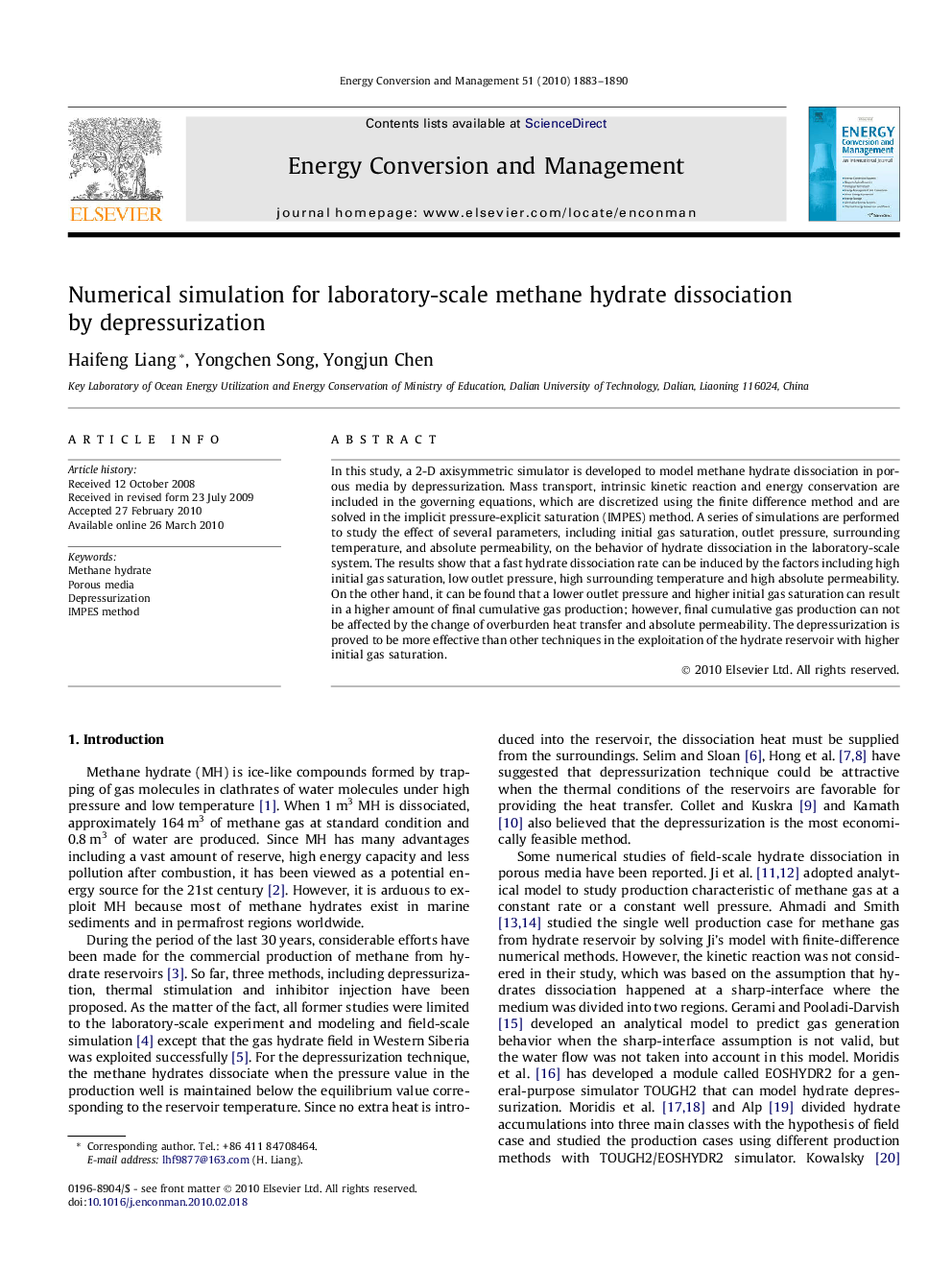| Article ID | Journal | Published Year | Pages | File Type |
|---|---|---|---|---|
| 772553 | Energy Conversion and Management | 2010 | 8 Pages |
In this study, a 2-D axisymmetric simulator is developed to model methane hydrate dissociation in porous media by depressurization. Mass transport, intrinsic kinetic reaction and energy conservation are included in the governing equations, which are discretized using the finite difference method and are solved in the implicit pressure-explicit saturation (IMPES) method. A series of simulations are performed to study the effect of several parameters, including initial gas saturation, outlet pressure, surrounding temperature, and absolute permeability, on the behavior of hydrate dissociation in the laboratory-scale system. The results show that a fast hydrate dissociation rate can be induced by the factors including high initial gas saturation, low outlet pressure, high surrounding temperature and high absolute permeability. On the other hand, it can be found that a lower outlet pressure and higher initial gas saturation can result in a higher amount of final cumulative gas production; however, final cumulative gas production can not be affected by the change of overburden heat transfer and absolute permeability. The depressurization is proved to be more effective than other techniques in the exploitation of the hydrate reservoir with higher initial gas saturation.
